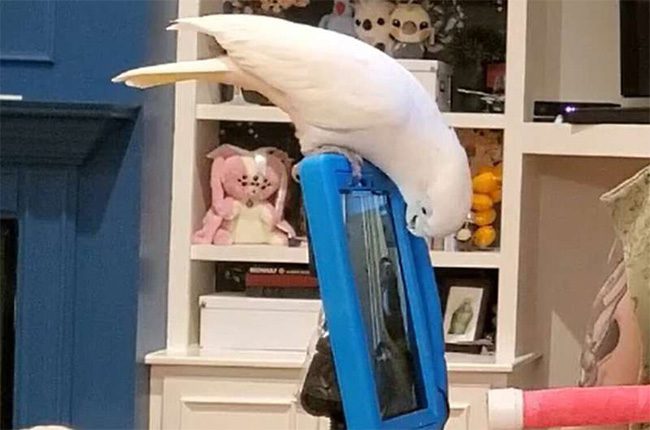According to the scientific news site Phys.org, experts from universities in Scotland and the United States have collaborated on research examining the interaction between animals and computers.
They spent over 1,000 hours observing the behavior of 18 pet parrots through video over a span of three months. The parrots learned to call to each other with the assistance of their caregivers.
The team found that the parrots that made the most calls received more calls in return. Additionally, they were friendlier towards their caregivers.

Image of a pet parrot looking at a screen to “chat” with a friend – (Photo: PHYS. ORG).
Parrots Ring the Bell to Call Friends
In the wild, many parrot species live in large flocks, but in captivity, they tend to live alone or in small groups. Isolation and boredom can lead captive parrots to develop psychological issues, which may manifest as behaviors like rocking, excessive movement, or self-harm such as feather plucking.
Dr. Ilyena Hirskyj-Douglas from the School of Computer Science at the University of Glasgow (Scotland), a co-author of the study, stated: “There are 20 million pet parrots in homes across the United States, and we wanted to explore whether these birds could benefit from video calling as well. If we give them the opportunity to call other parrots, will they choose to do so? And do these experiences benefit the parrots and their caregivers?”
An initial pilot study with four pet parrots yielded results indicating that the idea could be implemented.
The team then recruited volunteers from users of Parrot Kindergarten – an online education and training program for parrots and their owners – for a more in-depth research project.
Parrots Learn a Lot After “Calling” Friends
The parrots underwent two distinct training phases.
The first phase lasted over two weeks during which, with the help of caregivers, they learned to ring a bell and then tap the image of another parrot on a tablet screen to initiate a call to that bird. The calls only functioned when the caregiver could assist on both ends.
Dr. Rébecca Kleinberger, an assistant professor at Northeastern University in Boston (USA) and a co-author of the study, noted that after a two-week acclimatization period, they could choose to call other parrots by ringing the bell and then selecting the image of the parrot they wanted to call.
The second step involved training the parrot to select a “soulmate” for conversation. This step was crucial to ensure that the calls were not random or simply based on the parrots’ preference for the sound of the bell.
The parrots appeared to understand that they were truly interacting with other parrots on the screen. They even mimicked each other’s foraging behaviors. One caregiver reported that their parrot learned to fly after making a call.
This research will be presented at a conference organized by the Association for Computing Machinery (ACM) in Germany on April 24.


















































